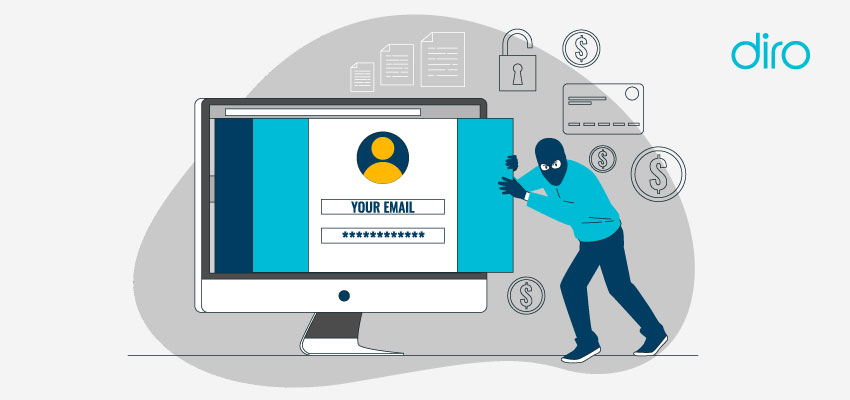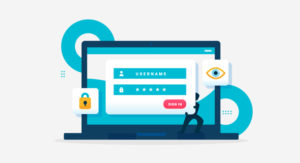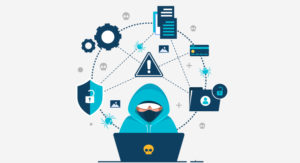Online Financial Fraud Trends 2024 – What You Need to Know🤔

2024 has been a turbulent time for financial safety. Fraudsters are finding new and innovative ways to commit fraud. With cutting-edge technologies, fraudulent organizations are exploiting the digital financial ecosystem.
Businesses that want to combat or prevent online fraud proactively must rely on sophisticated technologies. To keep your business protected, here are the fraudulent trends that you need to keep an eye on.
Online Fraud Trends to Know in 2024
One thing to know about the fraudulent landscape is that it changes quickly. Not paying attention to emerging trends can lead to hefty losses.
Staying ahead of the curve means understanding the emerging tools and techniques that criminals use. With generative AI models now available to anyone, staying up-to-date on fraud trends is more important than ever.
1. Cyber-Enabled Fraud (CEF)
Cyber-enabled fraud (CEF) is a new and growing fraud trend. CEF includes organized crime syndicates that exploit advanced digital technologies and use AI to trick victims.
These syndicates are structured into specialized groups, including those focused on money laundering operations to process ill-gotten gains.
CEF money laundering networks use a range of methods, such as money mules, shell companies, and legitimate businesses, across different types of financial institutions, including banks, payment services, and virtual asset service providers (VASPs).
CEF money laundering often exploits weak know-your-customer (KYC) policies, and businesses that overlook the importance of robust verification processes. Allow the syndicates to take advantage.
Some red flags that help detect suspicious transactions related to CEF include:
- Transfers of funds to and from high-risk money laundering jurisdictions
- Large frequent transactions with recently established companies
- Rapid or immediate high or low-value transactions from newly opened accounts
- Transactions or activities inconsistent with the purpose of an established account, entity, or beneficiary
2. Heightened Crypto Risks
The rapid rise and general access to cryptocurrency-enabled technologies necessitates closer oversight. Their decentralized, virtual nature makes them appealing for fraudulent activities. Cryptocurrencies are unsupervised by any government or central bank, completely anonymous, and allow for purely digital transactions.
The Financial Action Task Force (FATF) pioneered a comprehensive strategic response to cryptocurrency risks in 2018, amending its standards to include cryptocurrencies explicitly, followed by updates and clarifications.
Its regulatory framework for cryptocurrencies parallels traditional financial oversight, mandating countries implement the full AML/CFT framework with adjustments for the unique technologies involved.
Continuing this pattern, European regulations like the Markets in Crypto-Assets (MiCA) outline how crypto businesses must adhere to stringent anti-money laundering standards, reflecting the global push for more secure and regulated online financial activities.
3. eCommerce Scams
eCommerce consumers are seeing a rise in scams due to vague business policies and deceptive practices on eCommerce sites, from misleading product representations to aggressive sales tactics.
Awareness of these red flags is crucial for consumers and businesses to safeguard their interests.
Common Signs of Potential Scams
- Unclear shipping details indicate a lack of transparency about costs and policies
- Poor product presentations, such as low-quality images or errors in descriptions
- Extremely low prices, especially for well-known brands
- Urgency tactics or high-pressure situations that encourage immediate purchase
- Absent contact information or non-functional contact methods
4. Ambiguous AI
While AI significantly boosts the fintech sector’s efficiency and accuracy in detecting fraud, it introduces complex challenges. The lack of standardized regulations for AI’s responsible use and the biases embedded in AI systems complicate adherence to compliance and ethics, necessitating a prudent approach to deployment.
Marketplaces must carefully manage potential biases affecting decisions in crucial areas. The technological advances of AI that empower fintech firms also create vulnerabilities that cybercriminals exploit, requiring stringent security strategies to counteract these evolving threats.
When implementing AI in fraud detection or related applications, organizations need to be aware of several red flags to ensure the technology is used effectively and ethically.
Some examples include:
- Unexplained decision-making: AI systems that do not provide clear, understandable explanations for their decisions. It is crucial that AI decisions can be interpreted and justified, especially when they affect financial transactions or customer relationships.
- High false positive rates: If an AI system often mistakenly flags legitimate transactions as fraudulent, it may suggest issues like overfitting or incorrect feature weighting in the model.
- Lack of adaptability to new fraud techniques: AI systems that are not regularly updated or trained on new data may fail to catch novel or evolving fraud tactics.
- Ignoring contextual and qualitative data: AI models that rely solely on quantitative data and ignore qualitative contextual information may miss important cues that can indicate fraud.
5. Misuse of NGOs and Crowdfunding Platforms
Crowdfunding platforms and NGO misuse are primary concerns for the FATF, presenting unique obstacles for online business operations that require robust, proactive defenses.
Criminal organizations cleverly mask their fundraising activities on social media. They act as legitimate humanitarian efforts linked to charities, complicating tracking efforts by the intelligence community, private sector, and donors.
They channel funds through various means, including:
- State funding through cash transactions, cross-border payments, trade-based terrorism financing, exchanges, and banking systems
- Business portfolios, including real estate and investments
- Fundraising through social media and crowdfunding initiatives via bank accounts, payment services, and crypto exchanges
- Misdirected humanitarian aid
Why It’s Important to Keep Track of Emerging Fraud Trends
Keeping an eye out for all the emerging fraudulent trends helps businesses stay ahead of the curve and spot red flags before anything happens. Here are some key trends to keep track of emerging fraud trends:
- Proactive Risk Management
By being aware of emerging fraud trends, organizations can take proactive measures to prevent fraud before it occurs, rather than reacting to it after the fact.
Identifying new fraud patterns early allows for the timely implementation of controls and mitigation strategies, reducing the potential impact.
- Protecting Financial Interests
Fraud can lead to significant financial losses. Staying ahead of emerging trends helps minimize these losses by ensuring that adequate safeguards are in place.
By preventing fraud, companies can protect their profit margins and maintain financial stability.
- Safeguarding Reputation
An organization that actively prevents fraud demonstrates its commitment to integrity and security, thereby maintaining the trust of customers, partners, and stakeholders.
Avoiding high-profile fraud incidents helps protect the organization’s brand and reputation in the market.
- Regulatory Compliance
Many industries are subject to regulations that require them to implement specific fraud prevention measures. Staying informed about fraud trends helps ensure compliance with these regulations.
Non-compliance with regulatory requirements can result in significant fines and penalties. Keeping up with fraud trends helps organizations stay compliant and avoid such costs.
- Enhancing Security Measures
Fraud tactics evolve rapidly, and security measures must adapt accordingly. Tracking emerging trends ensures that security protocols remain effective against the latest threats.
Staying updated allows organizations to integrate new technologies and methodologies that can better detect and prevent fraud.
Conclusion
By staying informed and adapting to new fraud trends, organizations can better protect themselves and their stakeholders, ensuring long-term sustainability and trust.













